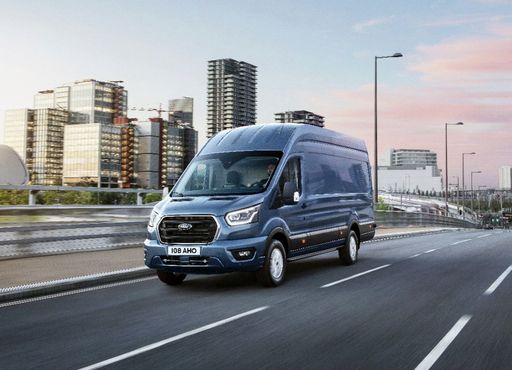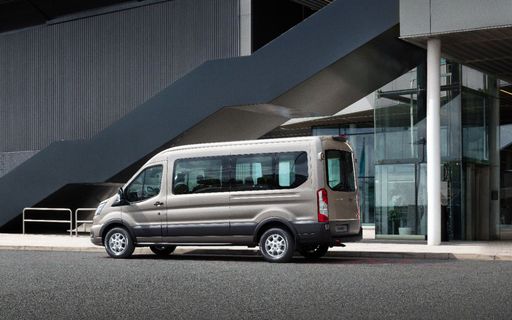Ford Transit Transporter vs Vauxhall Vivaro – Which car suits you better?
Both models have their strengths – but which one suits you more?
Compare performance, efficiency, price and space directly: Ford Transit Transporter or Vauxhall Vivaro?
Here’s where it gets real: The technical differences in detail
Costs and Efficiency: Looking at overall running costs, both models reveal some interesting differences in everyday economy.
Vauxhall Vivaro has the clearly advantage in terms of price – starting at 33200 £, while the Ford Transit Transporter starts at 39900 £. That’s a price difference of about 6732 £.
Fuel consumption also shows a difference: the Vauxhall Vivaro manages with 6.20 L and is therefore noticeably more efficient than the Ford Transit Transporter with 7.90 L. The difference is about 1.70 L per 100 km.
When it comes to electricity consumption, the advantage goes to the Ford Transit Transporter: with 21.30 kWh per 100 km, it’s a touch more efficient than the Vauxhall Vivaro with 23.60 kWh. That’s roughly 2.30 kWh difference.
In terms of range, the Vauxhall Vivaro performs minimal better – offering up to 352 km, roughly 35 km more than the Ford Transit Transporter.
Engine and Performance: Power, torque and acceleration say a lot about how a car feels on the road. This is where you see which model delivers more driving dynamics.
When it comes to engine performance, the Ford Transit Transporter clearly takes the lead – with 269 HP compared to 180 HP. That’s a power increase of roughly 89 HP.
In terms of top speed, the Vauxhall Vivaro is slightly ahead – reaching 185 km/h, while the Ford Transit Transporter tops out at 120 km/h. The difference is roughly 65 km/h.
There’s also a difference in torque: the Ford Transit Transporter pulls hardly any stronger, offering 430 Nm compared to 400 Nm. That’s about 30 Nm difference.
Space and Everyday Use: Cabin size, boot volume and payload all play a role in everyday practicality. Here, comfort and flexibility make the difference.
Seats: Vauxhall Vivaro offers noticeably more seating – 9 vs 6.
The Vauxhall Vivaro is slightly lighter – 1722 kg compared to 2074 kg. The weight difference is around 352 kg.
In maximum load capacity, Ford Transit Transporter wins – up to 14100 L, about 8000 L more than the Vauxhall Vivaro.
Payload capacity also favors the Ford Transit Transporter strongly – 2607 kg compared to 1226 kg. The difference is roughly 1381 kg.
Overall, the Ford Transit Transporter proves to be takes the lead with a more balanced package and secures the title of DriveDuel Champion.
It impresses with the more balanced overall package and is the more versatile choice for everyday driving.
Ford Transit Transporter
The Ford Transit Transporter has long been a staple in the commercial vehicle sector, renowned for its reliability and versatility. It offers a comfortable cabin with a modern design that enhances the driving experience, making long journeys more enjoyable. With a focus on practicality, the Transit provides ample cargo space, meeting the demands of businesses and individual users alike.
details @ media.ford.com
@ media.ford.com
 @ media.ford.com
@ media.ford.com
 @ media.ford.com
@ media.ford.com
Vauxhall Vivaro
The Opel Vivaro is a versatile van that excels in both practicality and comfort, making it a popular choice for businesses and families alike. Its sleek design is complemented by a spacious interior, providing ample room for passengers or cargo. With a focus on durability and performance, this vehicle is well-suited for long journeys and demanding workloads.
details

|
|
|
|
|
Costs and Consumption |
|
|---|---|
|
Price
39900 - 69100 £
|
Price
33200 - 52500 £
|
|
Consumption L/100km
7.9 - 10.3 L
|
Consumption L/100km
6.2 - 7 L
|
|
Consumption kWh/100km
21.3 - 32 kWh
|
Consumption kWh/100km
23.6 - 24 kWh
|
|
Electric Range
247 - 317 km
|
Electric Range
221 - 352 km
|
|
Battery Capacity
68 kWh
|
Battery Capacity
-
|
|
co2
0 - 270 g/km
|
co2
0 - 184 g/km
|
|
Fuel tank capacity
70 L
|
Fuel tank capacity
69 L
|
Dimensions and Body |
|
|---|---|
|
Body Type
Cargo Van
|
Body Type
Cargo Van, Bus
|
|
Seats
3 - 6
|
Seats
3 - 9
|
|
Doors
4
|
Doors
4
|
|
Curb weight
2074 - 2765 kg
|
Curb weight
1722 - 2260 kg
|
|
Trunk capacity
-
|
Trunk capacity
-
|
|
Length
5531 - 6704 mm
|
Length
4980 - 5331 mm
|
|
Width
2059 mm
|
Width
1920 mm
|
|
Height
2530 - 2778 mm
|
Height
1890 - 1935 mm
|
|
Max trunk capacity
9300 - 14100 L
|
Max trunk capacity
3200 - 6100 L
|
|
Payload
735 - 2607 kg
|
Payload
840 - 1226 kg
|
Engine and Performance |
|
|---|---|
|
Engine Type
Diesel, Electric
|
Engine Type
Electric, Diesel
|
|
Transmission
Manuel, Automatic
|
Transmission
Automatic, Manuel
|
|
Transmission Detail
Manual Gearbox, Automatic Gearbox, Reduction Gearbox
|
Transmission Detail
Reduction Gearbox, Manual Gearbox, Automatic Gearbox
|
|
Drive Type
Front-Wheel Drive, Rear-Wheel Drive, All-Wheel Drive
|
Drive Type
Front-Wheel Drive
|
|
Power HP
105 - 269 HP
|
Power HP
120 - 180 HP
|
|
Acceleration 0-100km/h
-
|
Acceleration 0-100km/h
10.5 - 14.3 s
|
|
Max Speed
120 km/h
|
Max Speed
130 - 185 km/h
|
|
Torque
310 - 430 Nm
|
Torque
260 - 400 Nm
|
|
Number of Cylinders
4
|
Number of Cylinders
4
|
|
Power kW
77 - 198 kW
|
Power kW
88 - 132 kW
|
|
Engine capacity
1996 cm3
|
Engine capacity
1499 - 2184 cm3
|
General |
|
|---|---|
|
Model Year
2019 - 2024
|
Model Year
2024 - 2025
|
|
CO2 Efficiency Class
G, A
|
CO2 Efficiency Class
A, F, G
|
|
Brand
Ford
|
Brand
Vauxhall
|
What drivetrain options does the Ford Transit Transporter have?
Available configurations include Front-Wheel Drive, Rear-Wheel Drive or All-Wheel Drive.
The prices and data displayed are estimates based on German list prices and may vary by country. This information is not legally binding.
